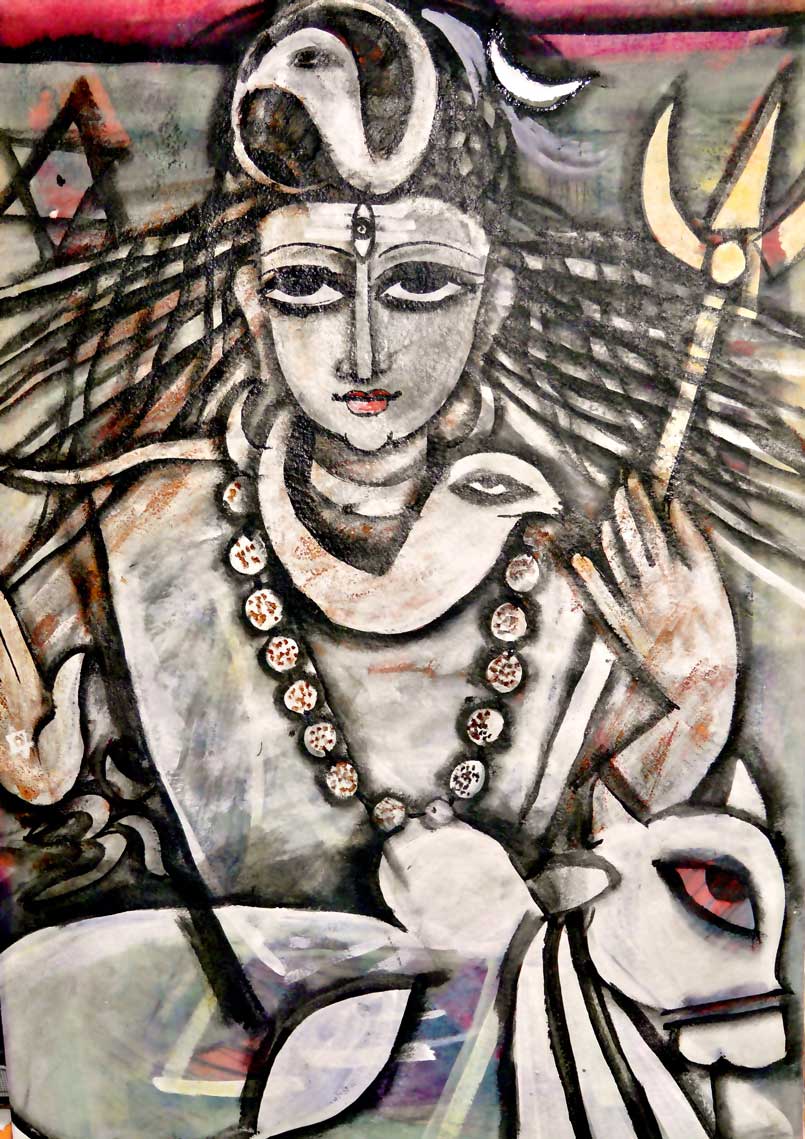 Shiva as Bholenath: simple and easy to please... The Legend of Arunachala Shiva: Holy Hill of Tiruvannamalai The Gods Vishnu and Brahma were rocking the universe, quarreling as to who was the superior Deity. To restore equilibrium, Shiva appeared as a flame, and challenged them to find his source. Brahma took the form of a swan, and flew to the sky to see the top of the flame, while Vishnu became the boar Varaha, and sought its base. Neither Brahma nor Vishnu could find the source and were humbled and bowed to Shiva. Arunachala (Annamalai) or red mountain in Tiruvannamalai, India, is recognized as a lingam, and the embodiment of Shiva as Infinite Light, described in this ancient legend. Perhaps Shiva (Siva in Sanskrit) represents the flame of Life, without beginning or end… everywhere, always, eternal, forever and ever and ever… transcending Brahma and Vishnu who sustain the rhythms of creation. Shiva rules tamas guna, the aspect of Mystery manifesting as the experience of matter. The Sanskrit word Shiva means auspicious, and refers to the scintillating divine qualities of our life on earth. The brilliance of the light of seeing, tasting, touching...of consciousness experiencing embodiment. The agony and ecstasy of each moment, as our amazing lives unfold. Shiva is the light of life...the brilliance of consciousness...that illuminates each instant of our experience. At times we are Shiva taking the form of Vishnu as the the boar Varaha infused with His strength, spelunking the deep dark caves of the infinite possibility of pain and suffering that our human experience offers. Often we become the Swan of creative possibility, of Brahma and his Shakti Saraswati soaring to the sublime ecstatic heights of embodied experience. We are the cutting edge of the unfolding of infinite possibility expressed in the unique dimension of Earthly experience. 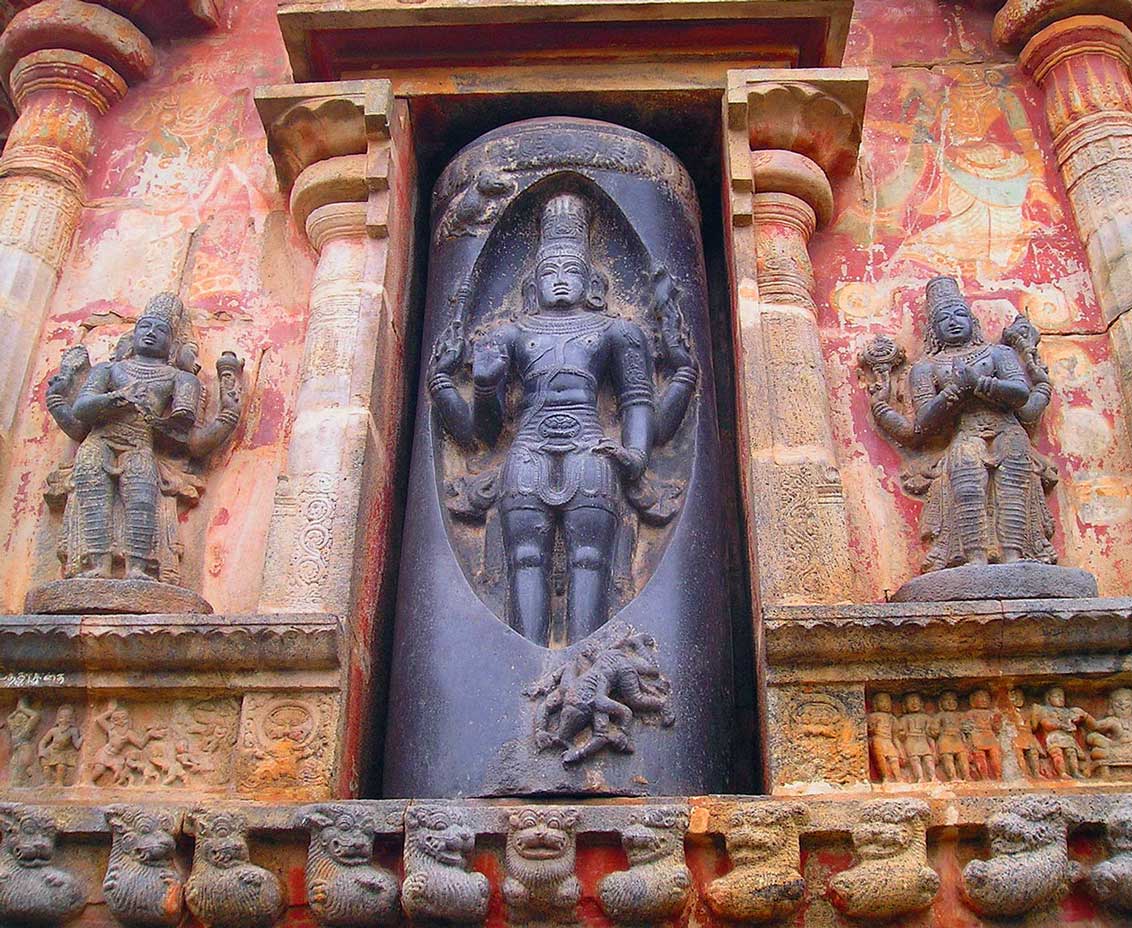 Lingothbhavar: Shiva as The Column of The Infinite light of Consciousness The Substratum of All Creation: Depicted in the legend of Arunachala Shiva ॐ ॐ ॐ To cherish and to serve the Earth is to worship Shiva. The beauty of life that we love so much is Shiva. Our own life, which we cherish so selfishly, is Shiva. Look no further, everything you are seeking, you already have! Aum Namah Shivaya! ॐ ॐ ॐ SIGNIFICANCE OF LORD SHIVA by Maha Yogi Paramahamsa Dr. Rupnathji Shiva is the experiencer and the highest object of experience. Shiva is the goal of Sadhana. There is nothing apart from Shiva. There is nothing other than Shiva. Whatever there is, is Shiva. There is nothing, which is not Shiva. There is no place, which is not Shiva. There is no time, which is not Shiva. To be aware of this is to be aware of Shiva. Shiva (Sanskrit: Śiva, lit. the auspicious one) is one of the principal deities of Hinduism. He is the supreme god within Shaivism, one of the three most influential denominations in contemporary Hinduism. Shiva is "the transformer" within the Trimurti, the Hindu trinity that includes Brahma and Vishnu. In Shaivism tradition, Shiva is the Supreme being who creates, protects and transforms the universe. In the goddess tradition of Hinduism called Shaktism, the goddess is described as supreme. A goddess is stated to be the energy and creative power (Shakti) of each, with Parvati the equal complementary partner of Shiva, Lakshmi, Vishnu and Saraswati of Brahma. At the highest level, Shiva is regarded as formless, limitless, transcendent and unchanging absolute Brahman, and the primal Atman (soul, Self) of the universe. Shiva has many benevolent and fearsome depictions. In benevolent aspects, he is depicted as an omniscient Yogi who lives an ascetic life on Mount Kailash as well as a householder with wife Parvati and his two children, Ganesha and Kartikeya. In his fierce aspects, he is often depicted slaying demons. Shiva is also known as Adiyogi Shiva regarded as the patron god of yoga, meditation and arts. Shivaism is essentially a nature religion, through ritual, offering alignment and coordination with subtle beings and supernatural forces. Shiva rules magic and the occult. Shiva is the god of the left hand path. The dark, lunar path of Tantriks: of the ritual use of sex, wine, and meat…of intoxication and ecstasy. Shiva is a protector of those on the fringes of society, of everything chaotic, and dangerous, the unexpected and un-explainable. He is god of the humble (shudras), outcasts and criminals. A protector of animals and trees. Shiva’s son Ganesha, is the lord of the ganas…the nature spirits: gnomes, goblins, gremlins and z, (smaller more focused devas, that abound in every aspect of nature.) Ganesh is universally, invoked first in any ritual, to propitiate the spirits of the earth, before calling forth the heavenly gods. The main iconographical attributes of Shiva are the third eye on his forehead, the serpent around his neck, the adorning crescent moon, the holy river Ganga flowing from his matted hair, the trishula (trident) as his weapon and the damaru (drum). Shiva is usually worshiped in the form of Lingam. Shiva is a pan-Hindu deity, revered widely across India, Nepal, Sri Lanka and Bali. 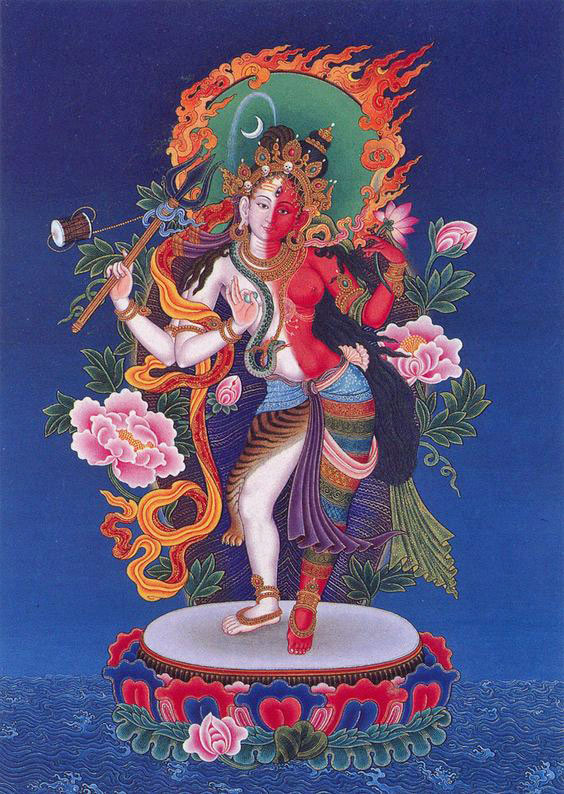 Ardhanariswari: Combining both the female and male aspects of creation.. Description of Siva ॐ ॐ ॐ
He leads a life of severe austerities. But in the images we find him tall and well built. His body is usually besmeared with ashes, denoting his frequent rounds to the cremation grounds and highlighting his fondness for Thiruneeru, a white sacred ash. He has three eyes. The third eye rests between his eyebrows. It is the eye of wisdom, by opening which he destroys the evil to maintain the cosmic harmony. His third eye symbolizes the all knowing awareness of the universe. Though he is described in the scriptures as god of anger, he is, in fact, the god of love and he always bestows all kinds of wealth and power to the devotees and this is the reason for which we generally find him in his cheerful and jovial mood in the images. He is simple and easy to please, equal friend to poor and rich, thief and saint. Often he is depicted with a lot of innocence in his demeanor as Bholenath (Lord of simplicity & simple people.) He is generally shown sitting cross-legged in a yogic posture, with his eyes closed and deep in meditation. When he is shown with his eyes open, his face expresses love and compassion. Siva is the god of simplicity, exemplary humility and austerity. A tiger skin and an elephant skin serve as his garments. His long matted hair is normally tied into a knot or left flowing. He has four arms. With one he holds his weapon the trident. With another, he holds Damaru, a small drum. The remaining two is held in abhaya mudra (the gesture of reassurance and safety, which dispels fear and accords divine protection) and varada mudra (offering welcome, charity, giving, compassion and sincerity). 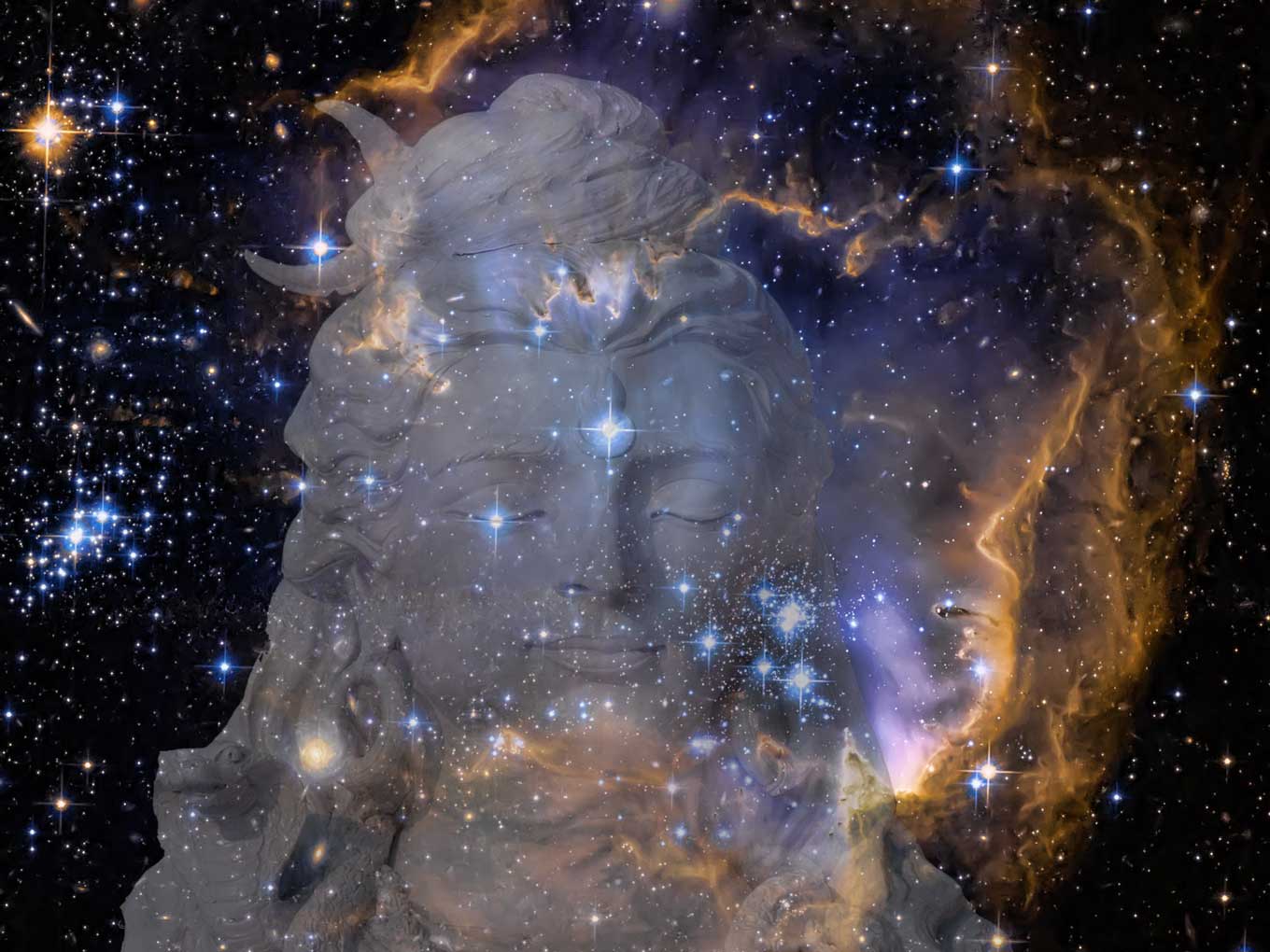 The moon adorns his head and represents the movement of time and also his cosmic proportions 🔱 The Trident and the Snakes ॐ ॐ ॐ The trident is the weapon of Siva with which he destroys evils and restores order. The trident stands for the triple qualities of nature, namely, sattva, rajas and tamas. Siva is the master of maya and thereby master of these three qualities with which he controls the universe. Shiva is worshiped as sacred pipal and banyon trees and the tri-foliate form of bael leaves is a special offering, symbolizes his trident. The trident symbolically represents the fact that Siva is the controller of the universe and the controller of all illusion. The trident also represents the three aspects of time, the past, the present and the future. Siva is master of Time, Kala Bhairava who determines the progress of the universe according to his will. The trident represents the three paths to self-realization, namely the path of knowledge, the path of action and the path of devotion. With these three paths, Siva transforms his devotees and destroys the evil in them. The trident stands for the three primary evils which need to be destroyed in order to make progress towards the divine. They are the evil of anger, the evil of lust and the evil of pride The damaru drum denotes his connection with the primal sound AUM, the creation of alphabets, languages, grammar and music. His long matted hair denotes his spiritual life and his great powers.The crescent moon adorns his hair like a silver diadem. He wears a garland of snakes around his neck. Sometimes we see more snakes; one across his body like a sacred thread and two acting as bracelets around his muscular hands. The snakes symbolically represent his control over desire and sensuality. Sometimes in his ferocious aspects, he is shown wearing a garland of skulls. There is a deep symbolism hidden behind this. The snake stands for all the evil and demoniacal nature in the world. By wearing the snake around his neck, Lord Siva gives us the assurance that no evil can touch us or destroy us once we surrender to him, seek his protection and worship him with deep devotion. The snake also stands for the power of kundalini, which is described as a coiled serpent lying dormant in the muladhara chakra of all human beings and descends upwards when one starts ones spiritual journey and becomes increasingly divine oriented. The snake around the neck of Siva conveys the meaning that in him the kundalini not only has arisen. The snake also stands for all passions and desires. By wearing the snakes around his neck, Lord Siva conveys the message to all his devotees that He has overcome all desires and is in full control of Prakriti, or maya and its various machinations. Symbolism ॐ ॐ ॐ Siva symbolically represents the tamasic quality. Because of this, he is called pasupathi, (the lord of the animals). His body color, which is white, denotes his purity (sivam) and association with the snowy mountains. His three eyes represent the sun, the moon and the earth, the three paths of liberation and the triple nature of creation. The third eye is actually the eye of wisdom or occult knowledge. The moon that adorns his head represents the movement of time and also his cosmic proportions. With the moon there, his head becomes the night sky, for which he earned the name Vyomakesa (one who has the sky or space as his hair). The moon also symbolizes his association with the occult and the tantras. Siva is generally seated in yogic posture with which most Hindus are familiar. However we also come across Siva as nataraja or tandavamurthi in a dance posture. With his hair flying in all directions and hands and feet in dynamic motion, the image of nataraja is a symbol of harmony and rhythm. Among the objects, which are associated with him popularly, apart from the trident and the Damaru, are battle-axe (parasu), rosary (aksamala), pasa (noose), khatvanga (magic wand) and khadga (sword). Lord Siva is know as Pasupathinath, the lord of all creatures. Being a lord of the animals he has complete control on their behavior. Since a snake is one of the most feared and dangerous animals in the world, the garland of snakes around the neck firmly establish the fact that he is a lover of animals and the animals always remain under his control. Although universally acknowledged as one of the trinity gods of Hinduism, to His followers, He is Maheswara, representing the Trinity all by Himself, His different aspects manifesting themselves as the creator, preserver and destroyer of the worlds He creates. Symbolically He is worshipped as Lingeswara, which name stands more for His creative powers. Siva and His Titles ॐ ॐ ॐ He is known by many names and titles. As a god of anger, He is Rudra, the Red One, feared by one and all. As Kailasapathi, He is the Lord of Kailash, His Abode in the Himalayas. As Purusha, He is Iswara Himself. As the Lord of the beings, He is known as Pasupathinath. As the husband of Uma, the Mother Goddess, He is known as Umapathi or Parvathipathi. As the bearer of the sacred river Ganges, He is known as Ganagadhar. Because of His matted hair, He is dearly called as Jatadhari, by His ascetic followers. As a perfect being, He is Siddheshwar. With His Trident in His hands, He became popular as heroic and fearless Trisuladhari. As the world teacher, Adi Shankara eulogized him as Dakhshinamurthi in his famous book, "Hymns to Dakhshinamurthi". 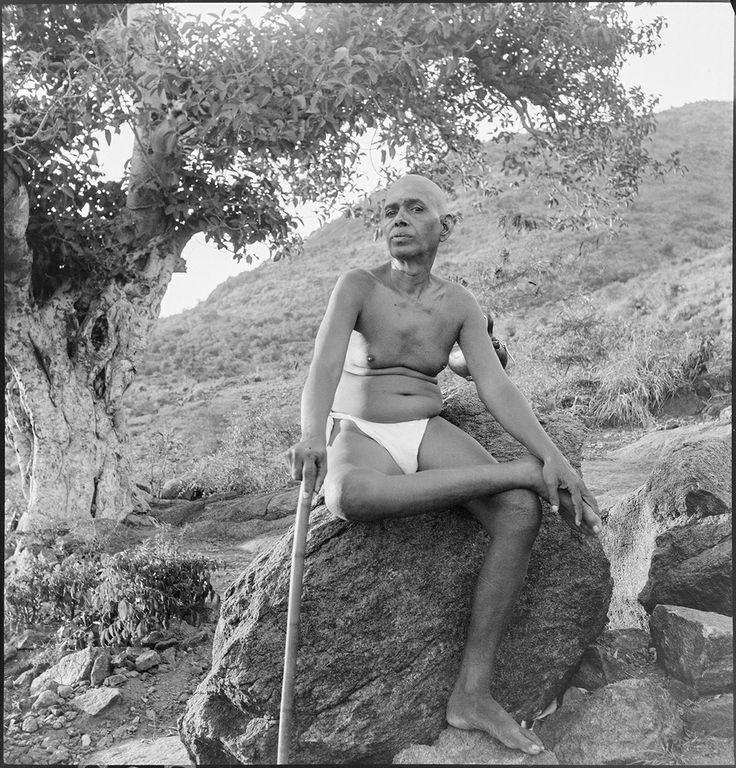 Sri Ramana in Dakhshinamurthi posture.
To the connoisseurs of art, He is well known as Nataraja, master of all dance forms. As the perfect Yogi, He is credited with the source of all knowledge concerning the various yogas. Such was His powers and divinity, that Lord Vishnu in His incarnations as Rama and Krishna, worshiped Him with great reverence. He was dearer not only to gods but also to demons. Many demons like Ravana, Bhasmasur and Surapathma were His ardent followers, to whom He gave several boons out of His unbound love and in the process invited great trouble for Himself and for others. Ever willing to help those who are in distress, He saved the cosmos and all the gods by partaking Halahal during the churning of the oceans. It is interesting to note that while He is worshiped as he is the guru of Tantrics sastras relating to kama, He is also known for destroying the physical form of Cupid, kama with His third eye when the latter tried to disturb Him during His meditation. Men and women love Him alike for his unsurpassed qualities of love and generosity. Even today many young and unmarried girls in India worship Him and pray to Him seeking a devoted husband like Him. Ardhanariswara half Shiva-half Parvati Because of His close association with Vishnu, He is also known as Hari Har. Combining in Himself both the male and female aspects of creation, He earned the popular name of Ardhanariswara. As rider of the Bull Nandi, He is known to the world as Nandiswara. Loved by His children Ganesha and Skanda, and followed by His dutiful wife. Aspects of Lord Siva ॐ ॐ ॐ Siva is known by several names and worshiped in various forms. We are mentioning below some of his most famous aspects: The Sivalingam is the symbolic of the Supreme Self. It is verily Maheswara Himself, the Highest Self and the Lord of the universe. In this aspect it has three parts. The lower part represents Brahma. The middle part, which is octagonal in shape, represents Vishnu. The upper part, which is cylindrical in shape, represents Rudra and is also called Pujabhaga. Sivalingam literally means the body of Siva. Next to the symbol of AUM, it is perhaps the most potent, powerful and popular symbol in entire Hinduism. In almost all the Siva temples, worship is generally made to Sivalingas only. In the North part of India, we come across his images in the sanctum sanctorum of any Siva temple. A Sivalingam is usually a round or cylindrical and protruding object. The cylindrical part is held firmly by a circular base. On the physical plane, the object resembles the male sexual organ, suggestive of the creative power of Siva. The octagonal base resembles that of the female, suggestive of his consort Parvathi. Physically a Sivalingam is a phallic symbol, representing the male and female sexual organs in a state of conjugal bliss. Mentally it symbolizes the union of mind and body. Spiritually it represents the union between Purusha and Prakriti, the highest principles of the manifest universe. The Sivalingas are normally found installed in the temples. But many devotees of Siva keep them in their houses and offer regular worship. People are however cautioned not to keep Sivalingas in their houses without offering worship, since they are believed to be powerful sources of divine energy. Sivalingas are either naturally found or made artificially. Different materials are used in their making, such as clay, gold, crystal, glass, diamonds, precious stones and wood. The round and smooth stones found in the river beds of the Narmada or the Godavari are considered to be the most ideal for worship. Sometimes Sivlingas are made temporarily with clay or sandal paste and disposed of after worship. Some devotees wear Sivalingas on their bodies or around their necks. Attributes of Lord Shiva ॐ ॐ ॐ Shiva's main attributes are :
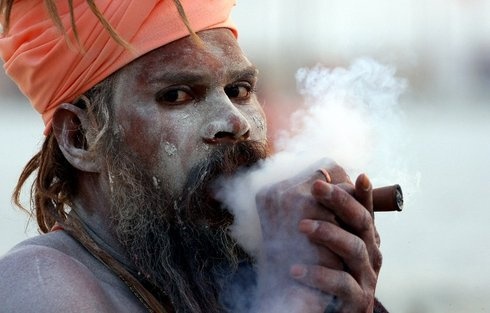 Followers of Shiva have used cannabis as a sacrament for untold thousands of years.. Ganja As Sacrament Shiva is a name Hindus give to the Mystery of Consciousness which illuminates life on Earth. Followers of Shiva have used cannabis as a sacrament for untold thousands of years. Shivaism is venerated as the oldest continuous form of worship on Earth! Vanamali Mataji, reminds us: " Shiva is always in a state of bliss due to the fact that he is always in a state of transcendental consciousness which has nothing to do with the intake on any type of hallucinogenic drugs.... there are many other ways of getting that ecstatic state than through psychedelic drugs. Shiva was not a yogi who sat in his Himalayan vastness drunk on Ganja , but he was always and ever immersed in the ecstasy of the inner the Self which is the only lasting bliss. " Aum Namah Shivaya! ॐ ॐ ॐ (Siva in Sanskrit) represents the flame of Life/Consciousness, without beginning or end… everywhere, always, eternal, forever and ever and ever... The Sanskrit word Shiva means auspicious, and refers to the scintillating divine qualities of our life on earth. The brilliance of the gift of seeing, tasting, touching...of consciousness experiencing embodiment. The agony and ecstasy of each moment, as our amazing lives unfold. Fire is an inter dimensional portal, that potentizes the ultrasonic songs these sacred herbs sing when they are burned. Our lips are Shiva and Shakti dancing to the music beyond sound. As we inhale the sacramental herbs, our consciousness is catapulted to our natural state of Oneness. Aum Namah Shivaya! ॐ ॐ ॐ Shiva is the Earth. To cherish and to serve the Earth is to worship Shiva. The beauty of life that we love so much is Shiva. Our own life, which we cherish so selfishly, is Shiva. Look no further, everything you are seeking, you already have! Ganja Mantra Om Shiva Shankara, Hara Hara Ganja Om Shiva Shankara, Hara Hara Om Alek... Bohm! Maha Mrityunjaya Mantra : Invocation of the Great Conqueror of Death Om Tryambakam Yajamahe Sugandhim Pushtivardhanam Urvarukamiva Bandhanan Mrityor Mukshiya Maamritat Meaning: 1: Om, We Worship the Three-Eyed One (Lord Shiva), 2: Who is Fragrant (Spiritual Essence) and Who Nourishes all beings. 3: May He release our Bondage of Samsara (Worldly Life), like a cucumber (naturally drops when ripe from the bondage of its vine) ... 4: ...and thus Liberate us from the Fear of Death, by making us realize that we are never separated from our Immortal Nature. Recommended Reading ॐ ॐ ॐ Shiva: Stories and Teachings from the Shiva Mahapurana, Vanamali Mataji, Inner Traditions Books, In India published as: Sri Shiva Lila Gods of Love and Ecstasy: The Traditions of Shiva, Alain Danielou, Inner Traditions Books Shakti,: Realm of the Divine Mother, Vanamali Mataji, Inner Traditions Books In India published as: Sri Devi Lila Ganja As Sacrament Home: www.weare1.us |